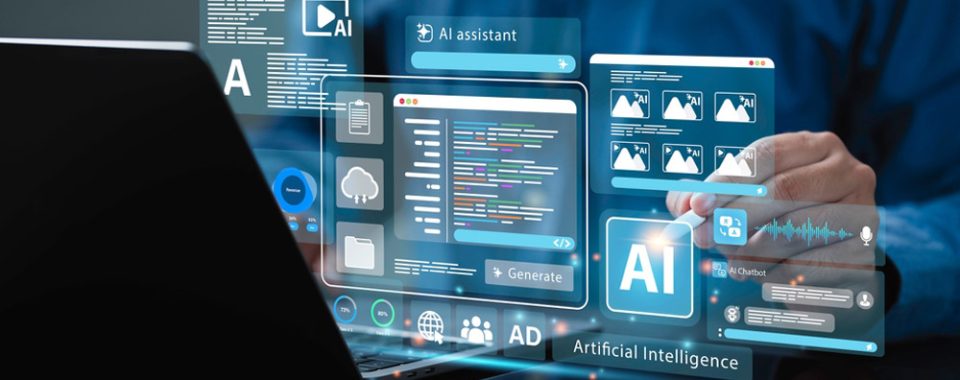
In today’s ever-evolving digital landscape, static content is no longer enough to capture attention, drive conversions, or sustain engagement. Consumers crave relevance, interactivity, and content that adapts to their needs in real time. Artificial Intelligence (AI) is not just a buzzword—it’s a fundamental shift in how brands create, distribute, and optimize content. From personalized product recommendations to conversational chatbots and AI-generated videos, the integration of AI into content strategies is reshaping digital marketing.
At Golden Seller Inc, we’ve seen firsthand how behavioral marketing combined with AI can unlock exponential growth. As a top digital marketing firm known for long-term strategies and psychological precision, we understand that the future belongs to businesses that can speak directly to the minds and desires of their audiences—consistently and dynamically.
Let’s break down exactly how AI powers dynamic and interactive content, why it matters, and how your business can start leveraging it now.
The Evolution from Static to Dynamic Content
Before diving into AI’s role, it’s important to understand what we mean by dynamic and interactive content. Traditional marketing content—static web pages, one-size-fits-all emails, generic ads—delivers the same message to every visitor. In contrast, dynamic content adapts based on who is viewing it. It can change based on the viewer’s demographics, behavior, location, preferences, and even real-time interactions.
Interactive content takes it further by inviting participation: quizzes, polls, assessments, chatbots, videos with clickable layers, and more. These tools aren’t just flashy—they significantly increase engagement and conversion.
But creating and managing this type of content at scale is nearly impossible without automation. That’s where AI steps in.
1. AI-Driven Personalization at Scale
Personalization used to mean inserting a name into an email subject line. Now, it means entire web experiences tailored to individual behaviors and preferences. AI algorithms analyze massive amounts of data—purchase history, browsing patterns, social activity, email engagement—and use it to serve relevant content in real time.
For example:
- Ecommerce sites use AI to show personalized product recommendations.
- Streaming platforms suggest content based on your viewing habits.
- Email campaigns dynamically adjust content blocks depending on each user’s past interactions.
This level of micro-targeting results in higher engagement, better customer satisfaction, and improved ROI. According to a study by Epsilon, 80% of consumers are more likely to purchase from brands that offer personalized experiences.
2. Predictive Analytics and Content Adaptation
AI doesn’t just react—it predicts. By analyzing patterns and forecasting future behavior, AI can anticipate what users will want next. This is key to creating content that feels timely, relevant, and intuitive.
Here’s how:
- Content Timing: AI tools like predictive send-time optimization choose the best time to deliver messages based on when a user is most likely to engage.
- Topic Forecasting: AI can identify trending topics before they peak, allowing brands to create timely blog posts, social content, or ad campaigns.
- Audience Segmentation: AI clusters audiences into behavioral profiles, so marketers can craft content journeys that evolve based on real-time feedback.
Imagine a website that adjusts its messaging, visuals, and call-to-actions depending on how a visitor has interacted with the brand across platforms. That’s not science fiction—it’s what AI makes possible today.
3. Conversational AI: Chatbots and Voice Assistants
Interactivity doesn’t have to be flashy—it just has to feel real. AI-powered chatbots, when implemented thoughtfully, create real-time interactions that mimic human conversation.
Modern chatbots:
- Understand context and sentiment.
- Offer tailored responses and recommendations.
- Integrate with CRMs and content systems to pull dynamic information.
These bots can guide users through decision trees, recommend content, assist with purchases, and even provide customer support—all while collecting valuable data that further fuels personalization.
Voice assistants take this further. With the rise of voice search, AI tools that respond to spoken language are shaping how content is delivered. Optimizing content for conversational AI will be critical for brands that want to maintain visibility in voice-dominated spaces.
4. AI-Powered Video and Visual Content
Creating personalized or interactive video content used to be cost-prohibitive. AI has changed that. Tools like Synthesia, Runway ML, and Lumen5 allow marketers to generate videos at scale—featuring dynamic elements such as text overlays, personalized intros, and even AI avatars.
Interactive video, in particular, allows viewers to choose their own journey. For example:
- A fitness brand might offer a “choose your goal” video path—muscle gain, weight loss, endurance training—with AI guiding the viewer to a tailored routine.
- A real estate company could use AI-generated voice tours and click-through virtual tours based on the viewer’s preferences.
These formats increase average watch times, boost interaction rates, and create an immersive brand experience.
5. Natural Language Generation (NLG)
AI can also write. Natural Language Generation tools like Jasper, Writesonic, and OpenAI’s GPT models (including the one you’re reading now) are capable of producing human-like content from scratch—or repurposing existing content for different audiences and formats.
Key applications:
- Dynamic email subject lines and CTAs based on user behavior.
- Product descriptions tailored to different buyer personas.
- Real-time social media updates tied to current events or user interests.
With proper strategy and human oversight, AI-generated content can maintain brand voice, emotional appeal, and relevance—at scale.
6. Gamification and Intelligent User Experience (UX)
Interactive content often overlaps with gamified experiences—think quizzes, progress bars, badges, and reward points. AI enhances these elements by optimizing when and how they’re presented to maximize engagement.
Example:
- A B2B brand might use an AI-powered quiz that tailors follow-up content and offers based on a prospect’s quiz results.
- A SaaS company could use AI to track in-app behavior and suggest next steps or features to explore in a gamified dashboard.
These small tweaks create a loop of feedback and interaction that keeps users engaged and nudges them toward conversion.
7. Dynamic Landing Pages and Programmatic Advertising
AI also powers personalized landing pages—pages that adjust content in real-time based on the visitor’s source, ad campaign, device, or behavior.
Combine this with programmatic advertising—where AI automatically buys and places ads based on audience data and performance metrics—and you have an ecosystem where every touchpoint is context-aware.
At Golden Seller Inc, we often pair dynamic landing pages with AI-powered retargeting strategies. This creates a seamless path from ad to conversion, where every message along the journey feels curated and relevant.
8. A/B Testing and Continuous Optimization
Traditional A/B testing is manual and slow. AI changes the game with multivariate testing and adaptive learning, where variations of content (subject lines, images, layouts, etc.) are tested automatically and optimized in real time based on performance.
This allows marketers to:
- Continuously improve user experience.
- Discover high-performing content combinations.
- React quickly to user trends and feedback loops.
AI doesn’t just help create content—it helps refine it with unprecedented speed and accuracy.
Why This Matters More Than Ever
Today’s consumers expect content that is not only personalized but relevant in the moment. Brands that rely on generic messaging will fall behind. AI provides the tools to meet this expectation—and even exceed it.
But here’s the catch: AI is only as effective as the strategy behind it.
AI tools alone won’t build brand trust or forge lasting relationships. That’s where psychology, behavioral science, and long-term vision come in. Understanding why people engage is still a human endeavor—AI just gives us the horsepower to scale it.
At Golden Seller Inc, we use AI not to replace creativity, but to enhance it. We build emotionally intelligent, behavior-driven marketing systems powered by machine learning. The result? Content that connects. Brands that last.
How We Can Help
At Golden Seller Inc, we don’t just plug in tools—we build AI-enhanced content strategies rooted in human psychology and proven behavior patterns. We take the complexity out of automation and make it feel seamless to your audience. Whether you’re looking to personalize your messaging, create interactive experiences, or automate dynamic content delivery across channels, we’ll help you do it in a smart, sustainable way.
Ranked the best digital marketing agency in California and top 10 nationwide, we’ve built our reputation on long-term growth strategies, not shortcuts. If you’re ready to create content that truly resonates and converts, let’s build something powerful together.








